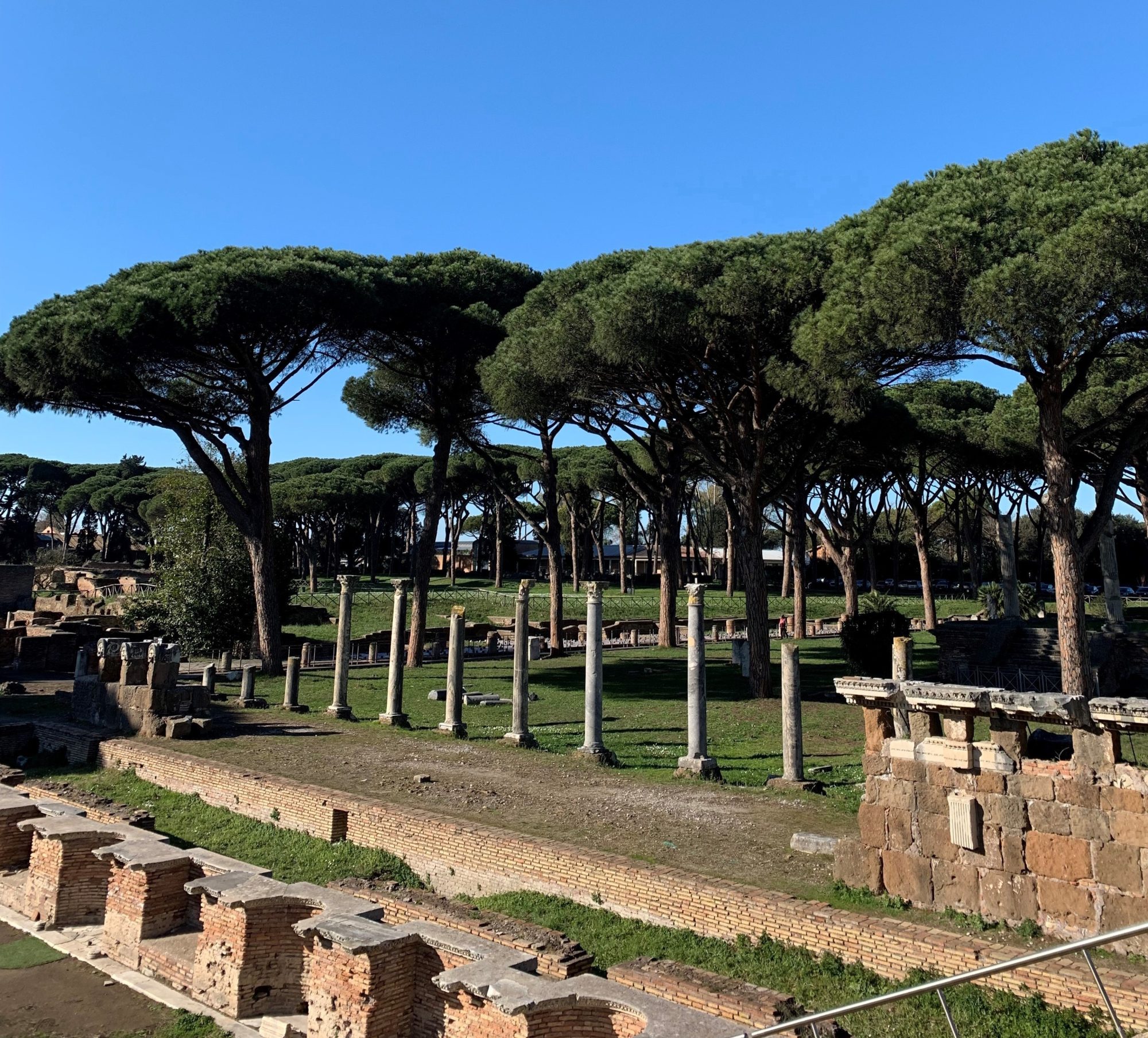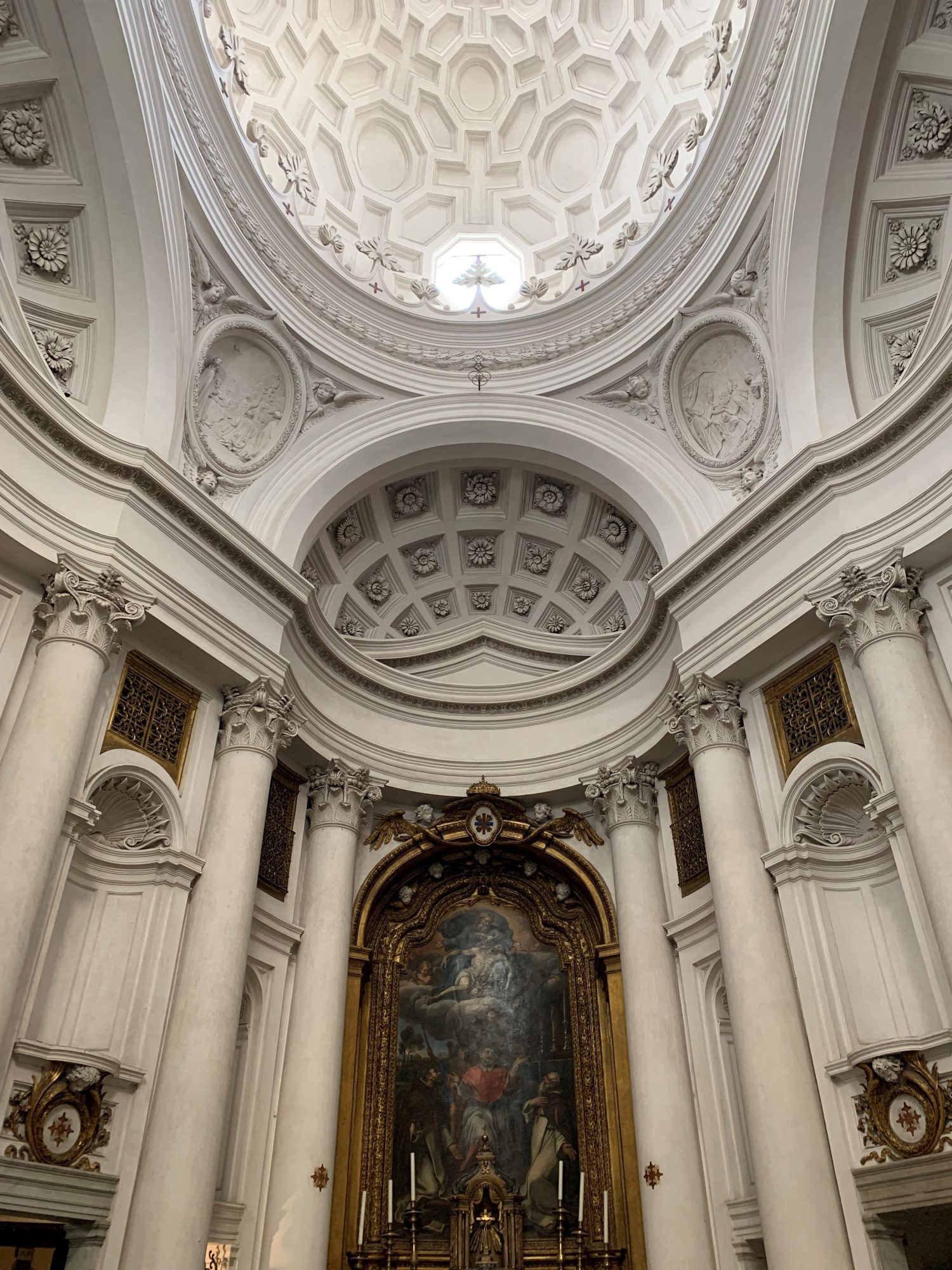Ciao from Roma, Italy
Special Contributor(s): Lydia Chapman
Ciao from Roma, Italia!
My name is Lydia Chapman, and I am participating in the School of Architecture Rome program. This is a faculty led program that includes three classes: ModCon, Architectural History, and a design studio.

My time in Rome has allowed me to understand so much about Italian culture and daily life as well as architecture and the monuments of the city. A lot of culture and life revolves around food, because of this I have learned a lot about how locals eat.
The typical Italian day begins with a pastry and coffee, and people typically have this breakfast standing rather than sitting and taking a lot of time. It is common to eat a late lunch consisting of pizza or a sandwich. Cafes or bars all over the city are frequented by locals coming in for their breakfast and/or lunch. Most Italians have a later dinner around 8 p.m. This is the largest meal, commonly including multiple courses as well as incredible wine. Understanding the way food paces the day for locals allows me to live more like them while I am abroad.

Another huge aspect to the culture in Rome is the history that has occurred here. The city was a center of growth for centuries, and it is not difficult to find art and buildings that are older than the United States itself. From the Pantheon to the Colosseum to St. Peter’s Basilica, visitors get a glimpse into the history of society at the time of construction. The apartment I am living in is less than a ten minute walk from the Vatican, and everytime I pass it, I am reminded of the enormous impact it and other buildings like it had on the people of this city.
This brings up another strong part of culture here: religion. Catholicism played a huge part in the social and economic changes here, and there are numerous moments in history where the church made big decisions for the city. In modern times, it is home to the pope and Vatican city has become a sort of home base for the Catholic Church. Studying history has taught me how interconnected culture can be with what existed before.
Speaking of history, the architectural history class has been one of my favorite things about studying abroad. Learning about the history of a place , while living in that place allows us to visit the sites we would otherwise just see pictures of.
Every week we go on a walk for class, where we identify features of the buildings and learn about their meaning in the historical context. Moving from place to place in class also introduces us to new areas in the city we may not see otherwise. Still, for a place that is generally old there are also plenty of newer buildings to visit as well. The ModCon class takes us to more modern and contemporary places that are not as known to tourists. We have explored ways to juxtapose old and new alongside one another in a way that is sensitive to history while being experimental. Rome is an ideal place for an architecture student to study abroad because the city can be used as a classroom.
One unique aspect to my semester abroad is the fact that we are still dealing with the global pandemic. Italy in particular has enforced strict rules to keep people safe after being hit so hard at the beginning of COVID. For months we were unsure if we would be able to come to Rome, but thankfully it ended up working out. With the vaccination requirements for entering restaurants, museums, and other establishments it actually felt safer to be here than in Charlotte. Upon arrival, masks were required indoors and outside, but a month into our stay here they were no longer required outside. The pandemic has not greatly affected our ability to explore the city. Overall, spending the semester in Rome has been a dream, and I would encourage anyone considering this program to do it.
*Edited and condensed for clarity
For more information regarding this student’s specific program, check out the program brochure: Italy: Architecture Semester in Rome.